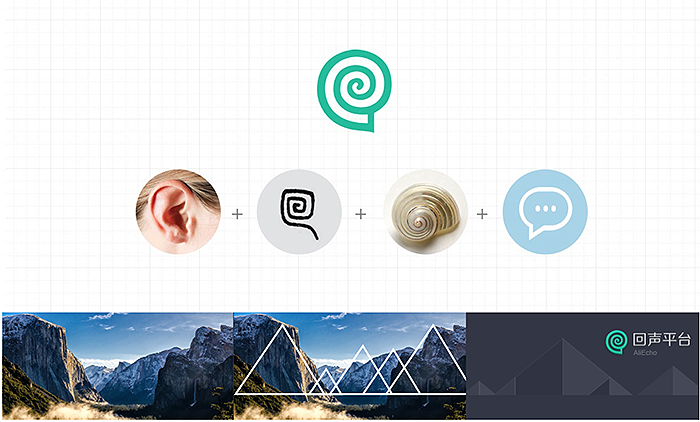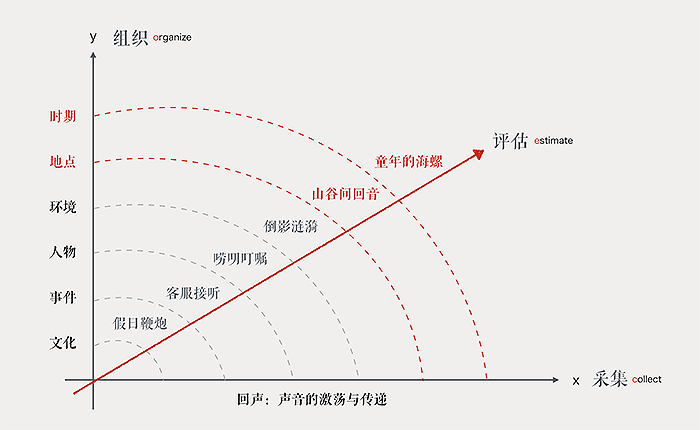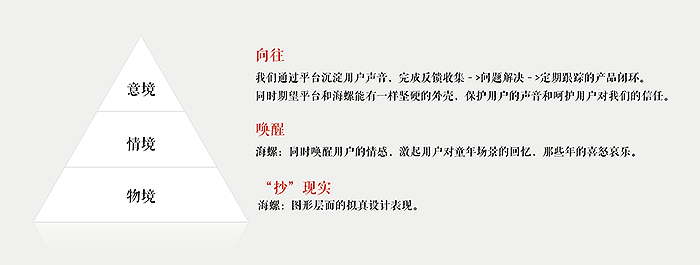The essence of user experience design is to design the most suitable user scene experience just right, and this experience is to unknowingly give the user and make the user feel excited at the moment of the touch, then how to make the user feel excited?
The ancients said: “Those who move people do not care about emotions.” The same we can see from John Nasbitt’s language: “No matter where there are emotions that need high compensation, the more high-tech society in the society, the better we will be. Longing for a high-emotional environment, use the soft side of design to balance the hard side of technology. As a creative activity of people, design is not to abandon passion or emotion, but to create a neutral that can accommodate and arouse users’ emotions. This kind of thing is a realm.”
Therefore, we at 1688UED formed a humanistic sentiment research team in 2014 to discuss how to carry out “touching design”. The research scope of the project ranges from Masnow’s needs to various effect theories and design psychology. Everyone is in the vast knowledge. Wandering around in the doctrine, and constantly colliding, produced various sparks of inspiration, and finally got a design idea about “DesignO2O” and a method model of “CORE”, and at the same time found out how to verify whether our “touching design” is effective.
The idea of DesignO2O was put forward by the group of students, and it is also the theoretical cornerstone of our entire design method. (See below)
The human brain is a super memory. It always receives information through the five senses, is remembered by the brain, and stored in memory. Since we are engaged in the Internet design industry, the human brain is a kind of computer page design, so the main thing we can play is the vision. And hearing, the industrial design of some physical objects offline will also have smell, taste, touch and so on.
The “recognition-preservation-reproduction” in the picture is the main process of human memory. Reproduction includes two links: recalling and recognizing. What we mentioned here mainly refers to recollection, which is the past experience under the influence of certain inducements. The process of reappearing in the mind. People who have memories have seen some things or heard some information, and matched them with the past saved by the brain, awakening the memory, and those images will be reproduced. In the process, your brain has been unknowingly recruited. The recurring picture stays in your mind for a long time, so that you do something unexpected, which is what we call emotional behavior. Taking ourselves as an example, what affects is the purchase decision. , There are a group of such users on our platform, called “Moonlight Clan, Chop Hand Party”… So we found that for a person who has no memory at all, it is actually difficult to touch emotions.
Through a large number of case collections and discussions, the application of this method in design is summarized as “DESIGNO2O”. Offline2online is the process just mentioned. The transformation of this process into design is to restore offline scenes or characters or events to In our design, the formula must be simple and easy to remember in order to be widely quoted. This is also an extension of the O2O business model, which also confirms a philosophical idea: everything is connected. Everything is interconnected.

Our O2O business model combines offline business opportunities with the Internet, making the Internet a front-end for offline transactions. Our design is the same with offline events, characters, scenes, and even virtual things remembered in the past. They have become the source of inspiration for our design. Bridges connecting offline and online are not necessarily exactly the same bridges. They will have the same results through the design techniques of different designers, but they can all touch people’s hearts. .
So what is the core idea of designO2O? How to use this idea to guide us to complete a touching design? In fact, the core of this idea is a design method model called CORE, which consists of 4 stages, namely, collect, organize, react, and estimate.
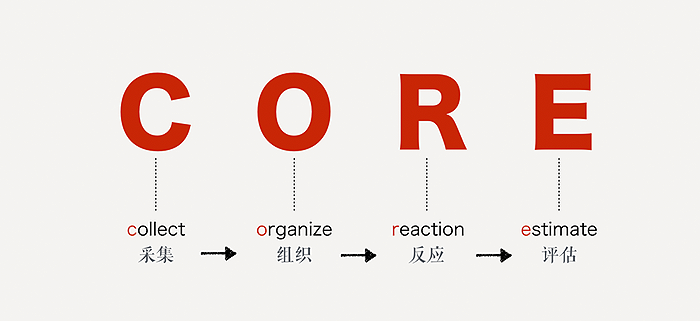
Their interaction with each other has formed a way to make a touching design. Next, I will subdivide and disassemble the entire model to talk about some of the things we need to do at each stage.
First of all, let’s talk about “collection”. We must have a design that touches people’s hearts. We must fully understand what users think and feel. The more fully understood, the closer to the user’s pain or their desire, the more it can stimulate the user’s heart. , To achieve our design goals. In this link, we can usually use empathy maps or user experience maps in the project to understand the target users in a qualitative and quantitative way (based on persona), and we can also learn to observe life more often and record life experience through photo diaries. Chernyshevsky said that beauty is life, and the bits and pieces in life will give us more inspirations that “touch people’s hearts”, allowing us to be comfortable in the design process.
The second link is “organization”. The user’s thoughts and feelings are collected in the collection link and will be reprocessed in this link. Previously, through the deduction of designO2O, it was found that “people without memory are difficult to trigger emotions”. Through the analysis of the correlation between memory and emotion, we found that both memory and emotion are the core of human cognition. Memories are usually accompanied by emotions and emotions help and deepen memory.
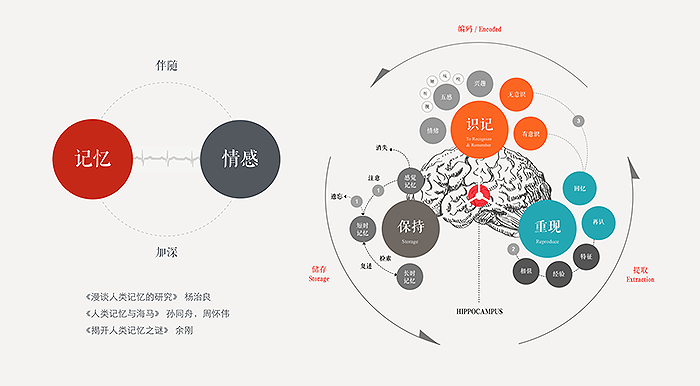
So we explored people’s emotional nodes from the perspective of memory, and then found that people’s emotional nodes vary from person to person. The most ideal situation for a touching design is to organize some shared emotional nodes instead of looking for use. It is a very important principle in the whole design method to design and present very small individuals. Through the study of memory and combining some data, we deduce six emotional nodes that may resonate with users in general.

Period (for example: special experience periods such as school days, childhood, and Cultural Revolution), region (such as hometown, home, most people think that home is a kind of sentiment, as can be seen from the flow chart of the Spring Festival Transport in 2014), The environment (this is also a very good entry point, we usually say that touching the scene produces emotion, the moon’s cloudy and sunny days, rainy days, sunny days, and different weather environments can trigger different emotions and touch the various emotional memories in the heart), people (recently Watching Chai Jing’s “Under the Dome”, she mentioned her daughter not long after the beginning of the whole video, which touched the softest part of many viewers’ hearts on the spot.), events (romantic, joyful, sad) , Such as SARS in 2003), culture (usually related to festivals, the most common doodle design at present will give priority to starting from this angle, easy to general emotional resonance.
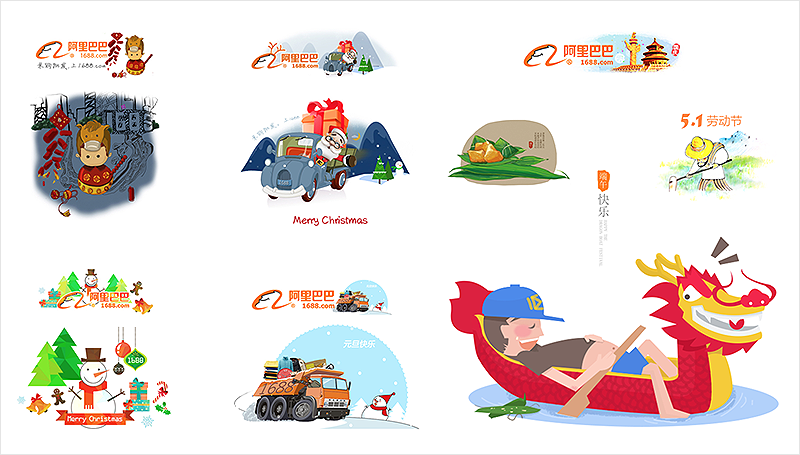
This is part of our doodle design made by 1688ued in 2014.
Next, let’s talk about the third link of this model, “reaction”. The several emotional nodes that we have just obtained through preliminary research on memory and emotion in the brain will play a vital role in the entire emotional response field. So what is the emotional response field?

The so-called emotional response field is to place the emotional nodes obtained in the organization link on the Y axis through the quadrant diagram and the core information elements collected in the collection link on the X axis. The core information elements on the X axis can be one or more. The core elements of the X-axis and the emotional nodes of the Y-axis are combined to form an emotional carrier thinking method.
Not all emotional carriers we find through the emotional response field are available. The last part of the method model is that we need to evaluate the various emotional carriers we have just obtained. In this link, first we can use the “three realms” verification method to evaluate and Screen emotional carriers. What are the “three realms”? Everything is connected, Chinese culture is extensive and profound, and it has a lot of commonality for art. The three realms we are talking about refer to the “things”, “situations” and “yijing” in poetry. The three levels of “copying reality”, “waking up” and “yearning” in our designO2O thinking correspond one-to-one.

What is the physical environment? “Last night the westerly wind withered the green trees, the tall buildings alone, looking at the end of the world” Everyone read this poem, there is a westerly wind, there are green trees, there are tall buildings is very poignant is a scene description, we usually use “copy” in the design process. “The realistic method restores the scene based on the target user’s experience and behavior. This is the physical environment. What is the higher “situation”? “If life is just as you see it, what is the autumn wind and sad painting fan” This poem comes from: Qing Nalan Rongruo’s “Magnolia Order”, which describes a kind of nostalgia for the past. In the design process, we can also pass some These emotional nodes awaken the user’s past memories to achieve the purpose of touching people’s hearts. What is the highest level of artistic conception? “There will be times when the winds and waves break, and the sails will hang on the clouds to benefit the sea.” It is a transmission of positive energy, a yearning, and a positive romantic sentiment. A great man once said that “a good work can have three realms at the same time, not necessarily one of them.”
In addition to the “three realms” verification method we just mentioned, we also need to evaluate the authenticity of these emotional carriers. What is authenticity? Authenticity refers to judging whether the emotional carrier can really effectively reach the user’s heart. How to evaluate it? Authenticity assessment can be done through perceptual measurement, card sorting, case voting, and expert walkthrough.
If the pure concept is a bit in the cloud, then give it a “chestnut”! For example: This is a user feedback platform project designed by our research team student Su Lin.
In this case, we used the design idea of DesignO2O we mentioned earlier to combine the core element of sound with the emotional nodes we obtained in the organizational link to establish an emotional response field to form an emotional carrier, and finally through evaluation and screening to obtain the most touching design Program.
Everyone has a Hamlet in his heart, so this is not the only result. I mentioned the “three realms” verification method before, so what are the three realms in this case?
Object environment: It is the realistic presentation of the conch graphics. Situation: The conch can awaken the user’s emotions, arouse the user’s memories of childhood scenes, and the joys, sorrows and joys of those years. Artistic conception: We use this platform to precipitate user voices, complete the collection of feedback from feedback -> problem solving -> regular tracking of the product closed loop. At the same time, we hope that the platform and Conch will have the same hard shell to protect the user’s voice and care for the user’s trust in us. .
Let’s talk about a small example. I chatted with a goddess before and talked about the “Three Realms” verification method. It happened to be the Lantern Festival that day, and she described her understanding of the Three Realms by taking glutinous rice balls as an example. The object concept is glutinous rice balls, the scene is the reunion of relatives, and the artistic conception is that the perfection is by your side. You can think about it in this way. Which of the three realms did your design draft reach? .
“The road is long and I will search up and down”, the touching design proposition is of great value and great value. At present, we have only discovered the tip of the iceberg. The research on this subject will continue to be improved and optimized. Hopefully This preliminary research summary can let everyone help in the design process, and jointly discover more and gain more on the road of “touching people’s hearts”.
